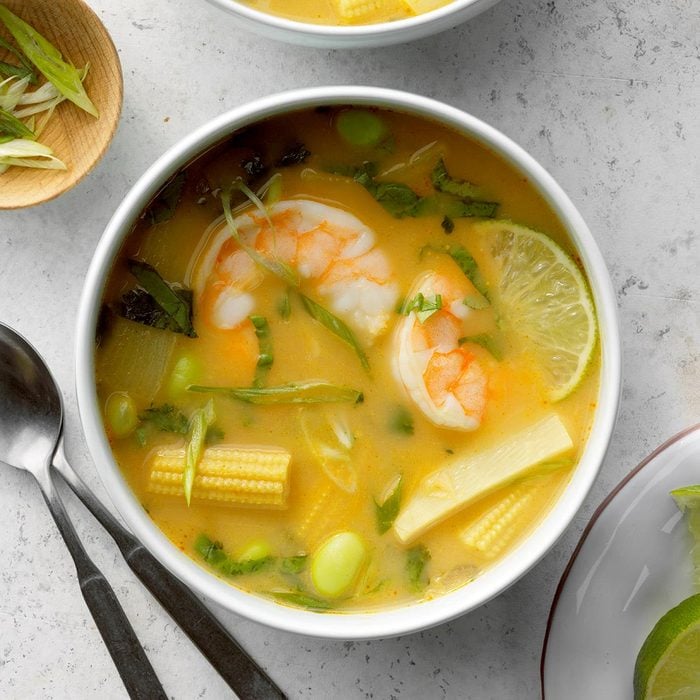Thai Shrimp Soup
Prep: 20 min. Cook: 20 min.
8 servings (2 quarts)
Updated: Jun. 22, 2022

This tasty soup comes together in minutes, and it’s a crowd pleaser. The ingredients are available in my little Maine grocery store, too. —Jessie Grearson-Sapat, Falmouth, Maine




















